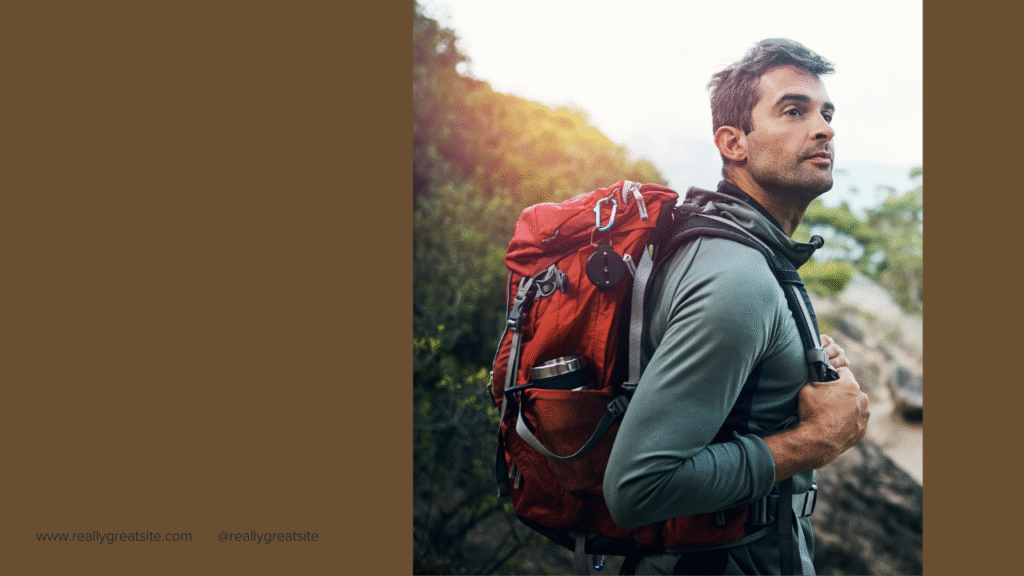The Freedom of Solo Backpacking
Embarking on a solo backpacking adventure is a transformative experience. It offers unparalleled freedom to explore new places, meet diverse people, and connect deeply with nature. Whether you're planning a solo backpacking trip through the rugged terrains of Patagonia or the bustling streets of Southeast Asia, the journey is uniquely yours.

1. Choose Your Destination Wisely Selecting the right destination is a critical first step. Safety should be your top priority research travel advisories and local conditions to ensure the area is safe for solo travelers. Accessibility matters too; look for places with reliable transportation and well-marked trails. Finally, let your personal interests guide you. For example, if you crave rugged mountain landscapes and challenging hikes, Patagonia is an excellent choice. Alternatively, if you want vibrant culture and budget-friendly travel, Southeast Asia offers a rich experience with affordable options.
2. Research Backpacking Routes
After choosing a destination, research routes that fit your fitness level and interests. Not all trails are equal some may be physically demanding, others easier. Use websites like AllTrails or hiking forums to find detailed information, user reviews, and GPS tracks. Local blogs and guidebooks can provide insights on the best times to hike and necessary permits. Understanding trail difficulty, terrain, and regulations will help you prepare mentally and physically.
3. Create a Solo Backpacking Checklist
A comprehensive checklist ensures you pack everything necessary without overloading your backpack. Start with a durable, comfortable backpack suited to your trip length. Include shelter options like a lightweight tent or hammock and sleeping gear rated for the climate. Layered clothing is essential to adapt to changing weather. Cooking equipment should be compact yet functional. Don’t forget navigation tools such as maps, compass, and GPS, plus a well-stocked first aid kit. Lastly, pack hydration gear, personal documents, and miscellaneous essentials like a headlamp and insect repellent.
Essential Gear for Solo Backpacking
Investing in quality gear is vital for safety and comfort. Brands like The North Face offer reliable backpacks and clothing suitable for various climates. When selecting gear, prioritize durability, weight, and functionality.
Must-Have Items:
- Backpack: Choose one that fits comfortably and has enough capacity for your gear.
- Shelter: A lightweight tent or hammock can provide necessary protection.
- Clothing: Layered clothing systems are ideal for adapting to changing weather conditions.
- Cooking Equipment: A compact stove and cookware set can help you prepare meals on the go.
- Navigation Tools: A map, compass, or GPS device is essential for staying on track.
Budget Travel Tips for Solo Backpackers
Accommodation
Save money by staying in hostels with shared facilities, which are affordable and social. Guesthouses offer comfort at a lower cost than hotels. If you enjoy nature, try camping. For a free option, use Couchsurfing to stay with locals. You can also exchange work for lodging through platforms like Workaway or WWOOF.
Meals
Eat on a budget by shopping at local markets and cooking your own meals in hostel kitchens. Street food is often cheap and authentic. Take advantage of daily lunch specials at restaurants. Picnicking in parks is a great way to enjoy a meal with a view at no extra cost
Transportation
Get around cheaply with public transportation like buses and subways. Walking is not only free but lets you explore local neighborhoods more deeply. In some cities, bike rentals are affordable and convenient. For long-distance travel, use night buses or trains to save on both transit and lodging.
Activities
Enjoy your destination without spending much. Go hiking, visit museums on free-entry days, and join free walking tours. Check local calendars for free cultural events, markets, or festivals that give you a feel for the local lifestyle without breaking the bank.
Navigating Backpacking Routes
Understanding the terrain and conditions of your chosen route is essential. Research trail conditions, weather forecasts, and any potential hazards. Apps and websites dedicated to backpacking can provide real-time updates and user reviews.
The Importance of a Solo Backpacking Checklist
A well-thought-out checklist can prevent last-minute packing stress and ensure you have all necessary items. Regularly review and update your checklist based on your experiences and feedback from fellow travelers.
Conclusion
Solo backpacking is far more than just traveling alone; it's a transformative journey that reveals your inner strength, resilience, and capacity for growth. While careful planning and reliable gear provide the essential foundation, it’s your openness to uncertainty, solitude, and the unknown that truly shapes this experience. Out on the trail, every challenge whether unpredictable weather, physical fatigue, or moments of loneliness becomes an opportunity to learn patience, self-reliance, and gratitude.
Each step you take through unfamiliar landscapes invites reflection and a deeper connection to nature and yourself. The quiet mornings watching the sunrise, the stars overhead in a remote campsite, and the simple joy of preparing your own meals all add richness to the journey. You’ll discover how capable you truly are, building confidence with every mile.
Solo backpacking encourages you to slow down, listen to your own rhythm, and find peace in solitude while opening your mind to new cultures and perspectives. It’s a path of empowerment and self-discovery that stays with you long after the trip ends. So lace up your boots, embrace the unknown, and let the journey not just show you the world, but also reveal who you really are.






